Is Grizzly Goimg to Releade the Big Can Again

Trina Jo Bradley at the gate to one of her ranch'southward pastures. Like most ranchers here, she'southward been largely accommodating of the grizzlies equally their population has rebounded and they've spread off of the neighboring mountains into the more populated plains. Claire Harbage/NPR hide caption
toggle caption
Claire Harbage/NPR

Trina Jo Bradley at the gate to ane of her ranch's pastures. Like well-nigh ranchers hither, she'southward been largely accommodating of the grizzlies as their population has rebounded and they've spread off of the neighboring mountains into the more populated plains.
Claire Harbage/NPR
Trina Jo Bradley squints down at a plate-sized hand print, pressed into a sheet of shallow snow.
She reaches down with fingers outstretched, hovering her palm over a lord's day-softened edge. Her hand barely covers a tertiary of the track.
"That'southward a big erstwhile pes right there," she says, with a chuckle. "That's the ane where you don't desire to exist like: 'Oh! There he is correct in that location!"
Bradley, like many ranchers, applies a wry sense of humour to things that feel out of her control.
Growing upwards here on the Rocky Mountain Front end, where prairie meets mount, she rarely saw grizzlies. Now, she sees them all of the fourth dimension. Some nights, her family unit watches the massive carnivores lumber by outside their living room window. Bradley says they're majestic.
"Equally long equally they listen their own business and stay out of my cows, I could really care less if they're hither," she says. "I enjoy having them hither and I think nigh ranchers do."
Similar most ranchers, Bradley and her husband have been largely accommodating of grizzly bears equally their population has rebounded and they've spread from the mountains into the more-populated plains. They've started storing nutrient for their cattle in a raised, bear-proof container. Neighbors have lined entire pastures with electric fencing. Bradley's girl at present knows not to go out the chiliad.
But frustration is growing.
Since beingness listed equally threatened under the Endangered Species Act in 1975, grizzly acquit populations in northwest Montana and the Greater Yellowstone Area accept more than tripled in size, thanks, in no pocket-sized part to a difficult-earned tolerance and efforts from people similar Bradley to reduce conflict between man and conduct.
That tolerance, scientists and wild fauna officials say, is key to the grizzly bears' future as the effects of climate change harden, the Westward gets more than crowded, and bears spreads into areas they haven't been in more than 100 years.
Bradley's tolerance is waning.
The bears have nothing to do with it.
The source of her frustration is a feeling that her opinion doesn't affair and that the landmark law that brought grizzly bears back is being misused.
"I would like to come across the Endangered Species Act do exactly what information technology was written for," she says. "And when a species is recovered, it's washed. And then it goes to the state to manage information technology."

Some of Bradley's cows stand in their pasture on the Rocky Mount Forepart. As the grizzly population has rebounded, they've spread off of the neighboring mountains into the more-populated plains. Claire Harbage/NPR hide caption
toggle explanation
Claire Harbage/NPR

Some of Bradley's cows stand up in their pasture on the Rocky Mountain Front. Every bit the grizzly population has rebounded, they've spread off of the neighboring mountains into the more-populated plains.
Claire Harbage/NPR
Meliorate than expected recovery
When Chris Servheen was named the nation's kickoff grizzly bear recovery coordinator, tasked with saving and restoring the iconic species, he wasn't optimistic.
At that place were just a few hundred of the mammoth mammals left in the lower 48 U.Southward. states, holed up in the confines of Yellowstone National Park and a few wilderness areas forth the Canadian border. People were encroaching on most sides, many of them not keen to be cohabiting with an beast that the Department of Interior aptly described equally beingness "highly intolerant of man."
6 years earlier, the U.S. Fish and Wildlife Service had intervened, placing strict federal protections on grizzly bears in the contiguous U.Due south.
It was Servheen's task to bring the bears dorsum to the point where those federal protections weren't needed.
Quietly, he thought he'd be presiding over their demise.

2 grizzly gears at the Grizzly and Wolf Discovery Eye in Due west Yellowstone, Mont. Well-nigh bears are relocated to the center when they or their parents have issues with or become likewise comfortable interacting with humans. Claire Harbage/NPR hide caption
toggle caption
Claire Harbage/NPR
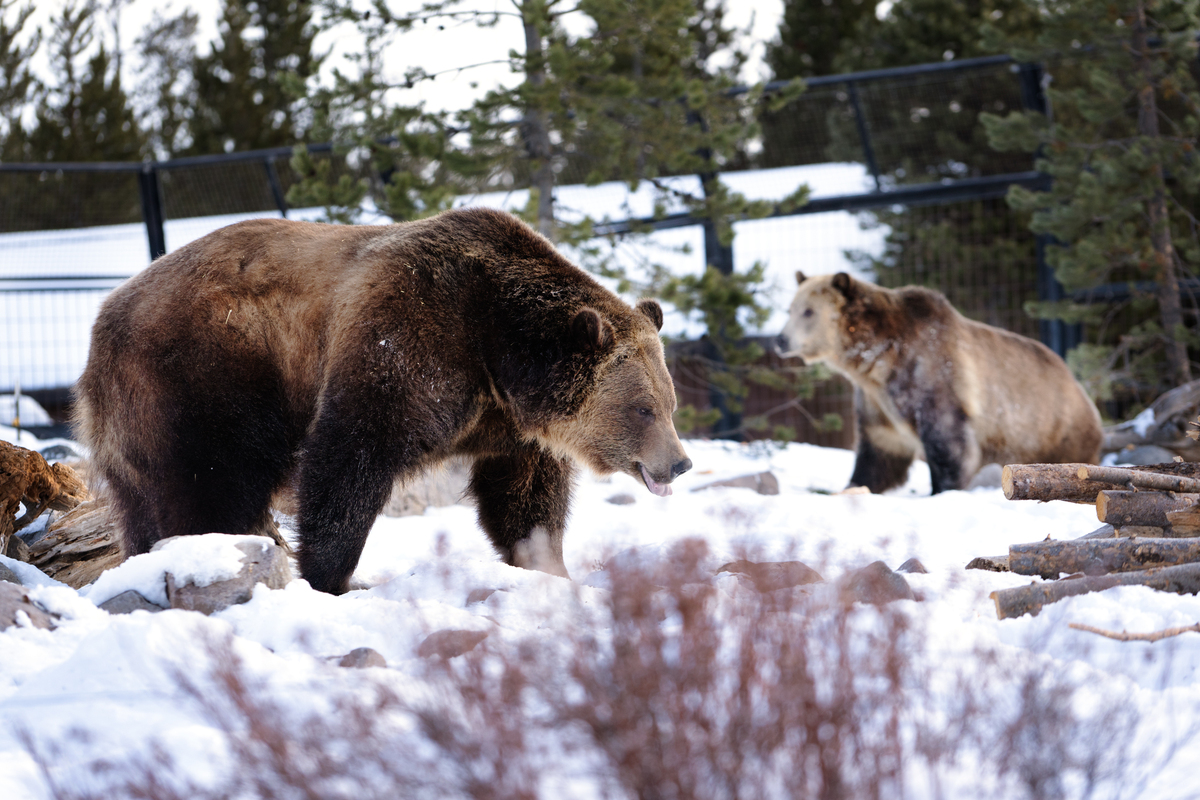
Ii grizzly gears at the Grizzly and Wolf Discovery Middle in West Yellowstone, Mont. Most bears are relocated to the middle when they or their parents take bug with or get also comfy interacting with humans.
Claire Harbage/NPR
Grizzly bears are tedious to reproduce. They require massive amounts of habitat. "And they kill people," Servheen says, in the matter-of-fact tone that earned him admirers and enemies during a 35-yr career.
What followed, though, exceeded his and most people'south expectations.
With federal protections in place, wildlife officials and conservation groups set out to alter attitudes and build tolerance for the bears. They started programs to reimburse ranchers for livestock that bears killed. They closed roads in bear habitats and fenced in landfills.
Grizzly populations in the Yellowstone region and northwest Montana flourished. Today, there are an estimated 1,400 to 1,700 grizzly bears in the face-to-face U.South.
"The Endangered Species Deed works,"says Servheen, now retired. "Nosotros proved it with grizzly bears."
In 2007, the U.Southward. Fish and Wild fauna Service alleged success, removing endangered species protections for Yellowstone-area grizzlies. Lawsuits from wildlife groups and tribal governments quickly followed and two years later federal protections were put dorsum in place, after a federal gauge decided that the agency hadn't fairly considered the impacts of climate change on the bears' food sources.
In 2016, as Servheen was retiring, his agency tried to delist the bears over again. Again, it failed.
A federal judge restored endangered species protections to Yellowstone-surface area grizzlies concluding fall, simply hours earlier a highly-controversial chase of the bears was scheduled to showtime in Wyoming and Idaho. An effort to delist grizzlies in northwest Montana was paused too.
The U.S. Fish and Wildlife Service filed a find to appeal the latest courtroom conclusion final December, but a resolution could take years.
To some who support delisting, the back-and-forth doesn't seem similar that big of a deal.
"I don't doubt that some people are very frustrated, but the upshot of non delisting grizzly bears is the continuation of good and effective programs," says Tom France, a long-time conservationist with the National Wildlife Federation's Northern Rockies, Prairies and Pacific Regional Middle.
Many people who live in grizzly behave country, he points out, are continuing to work with conservation groups and wildlife agencies to protect the bears.
To Servheen, the danger seems more acute. He worries that the delay will erode public support for the Endangered Species Act and, more importantly, for the bears themselves.
"The future of grizzly bears is in the hands of the people who live, work and recreate in bear habitat," he says. "And if those people feel that no thing what they exercise, nix's ever going to modify, nothing's ever good enough, then they won't invest the time in helping with recovery."

Billboards near the Marias River where a grizzly was killed terminal year by the Fish and Wildlife Service subsequently being severely wounded by gunshots. Claire Harbage/NPR hide caption
toggle caption
Claire Harbage/NPR

Billboards near the Marias River where a grizzly was killed last yr by the Fish and Wild fauna Service after being severely wounded by gunshots.
Claire Harbage/NPR
"People ... feel that their rights are existence infringed upon"
Wesley Sarmento always keeps his cell phone on him, fifty-fifty though he'due south often out of cellular service.
As a conduct management specialist for Montana Fish, Wildlife and Parks, stationed in the rural, agronomics-rich Rocky Mount Forepart, he gets calls all the time.
"I've gotten calls at four in the morn. I've gotten calls at 8pm on a Fri dark," Sarmento says. "Usually bears in people's yards, eating apples, domestic dog nutrient — finding food mainly."
Conflicts between humans and bears have been on the rise in recent years. Grizzlies, well-nigh always, cease up on the losing end.
Last twelvemonth, scientists counted 51 grizzly acquit mortalities in northwest Montana, making it the deadliest year since they started keeping track.
Sarmento's job is to try and reduce those conflicts and deal with the ones that occur. He speaks at boondocks meetings and teaches behave condom at public schools, preaching tolerance and listening to complaints. He removes livestock carcasses from ranches.
When a disharmonize arises, Sarmento is the person who responds, only he doesn't e'er go final say.

Wesley Sarmento, the bear biologist in Bradley's region, stands in the Fish and Wildlife Service function in Conrad, Mont. Claire Harbage/NPR hibernate caption
toggle caption
Claire Harbage/NPR
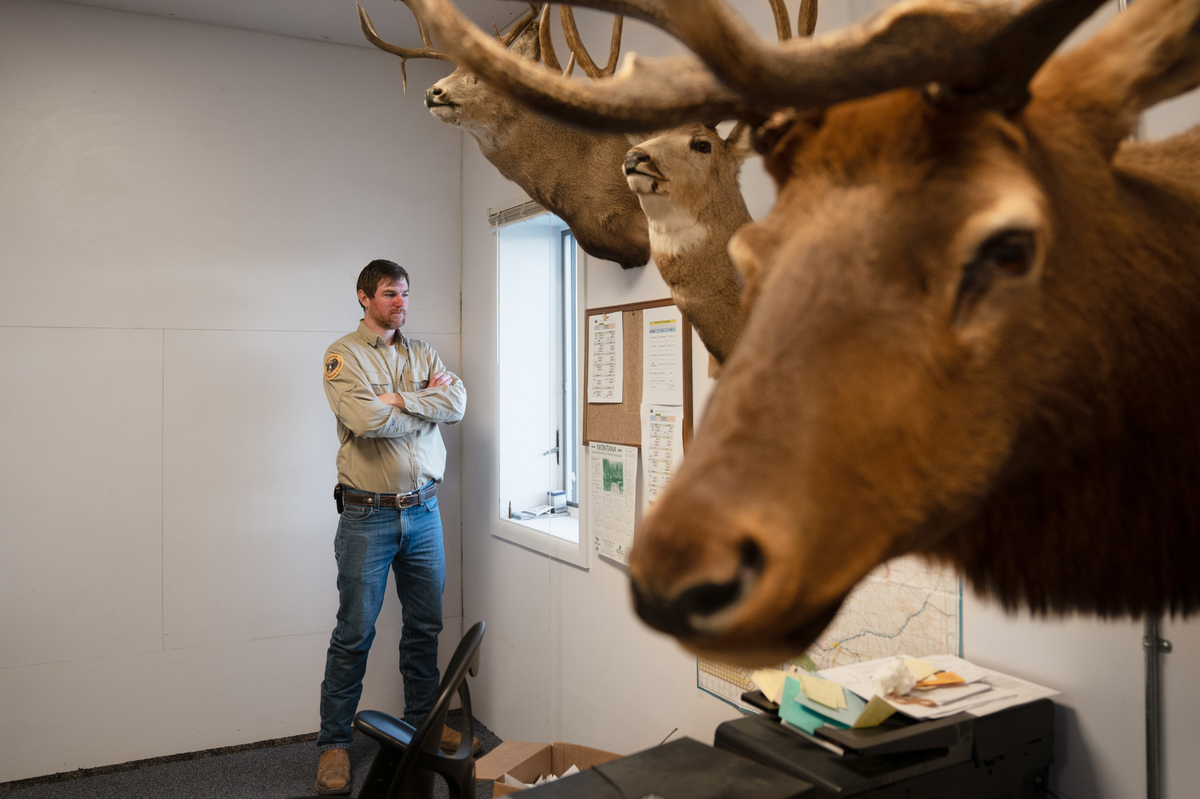
Wesley Sarmento, the bear biologist in Bradley's region, stands in the Fish and Wild fauna Service office in Conrad, Mont.
Claire Harbage/NPR
Considering grizzly bears are nevertheless federally protected here, Sarmento has to call federal wildlife officials before he takes certain deportment, similar relocating a acquit or setting up a trap. It tin can be annoying at times, he says, but he unremarkably doesn't heed.
The power dynamic doesn't go unnoticed past ranchers though, many of whom are already suspicious of the federal government.
Bradley thinks it'southward ridiculous that Sarmento has to check in with his federal counterparts, and believes that state biologists — free of federal oversight — would exist amend able to respond to trouble bears.
Sarmento and others say that little would change. "Things would exist streamlined," he says.
Critics of delisting grizzly bears worry that country direction would mean more dead bears, and they're right, in that country management would undoubtedly include hunting.
Wyoming and Idaho had issued permits to chase 23 grizzlies final fall, before the federal approximate's determination restored federal protections for the bears. Montana held off on granting a hunting flavour, but few doubt that the state would soon do the same.
State wild animals managers say that hunting is an important role of wildlife management and that information technology would be carried out in a responsible, highly-regulated way. If comport populations cruel below a certain threshold, they'd exist relisted.
Bradley could intendance less about hunting. Her frustration is more than well-nigh what she sees equally a broken promise, and a feeling that she has no say in how bears are managed.
Sarmento hears that frustration from a lot of the locals he interacts with. Some, he says, take fifty-fifty stopped collaborating with him on projects.
"I certainly hear some antagonism to the Endangered Species Act, because people that are living with endangered species experience that their rights are existence infringed upon," he says. "That recovery goals are going beyond what was originally agreed to."

A bear warning sign on the banks of Lake Frances in Valier, Mont. Sarmento captured and tagged and released a female grizzly on Lake Frances concluding year, later residents voiced concerns. The grizzly did non cause whatever conflicts. Claire Harbage/NPR hibernate caption
toggle caption
Claire Harbage/NPR
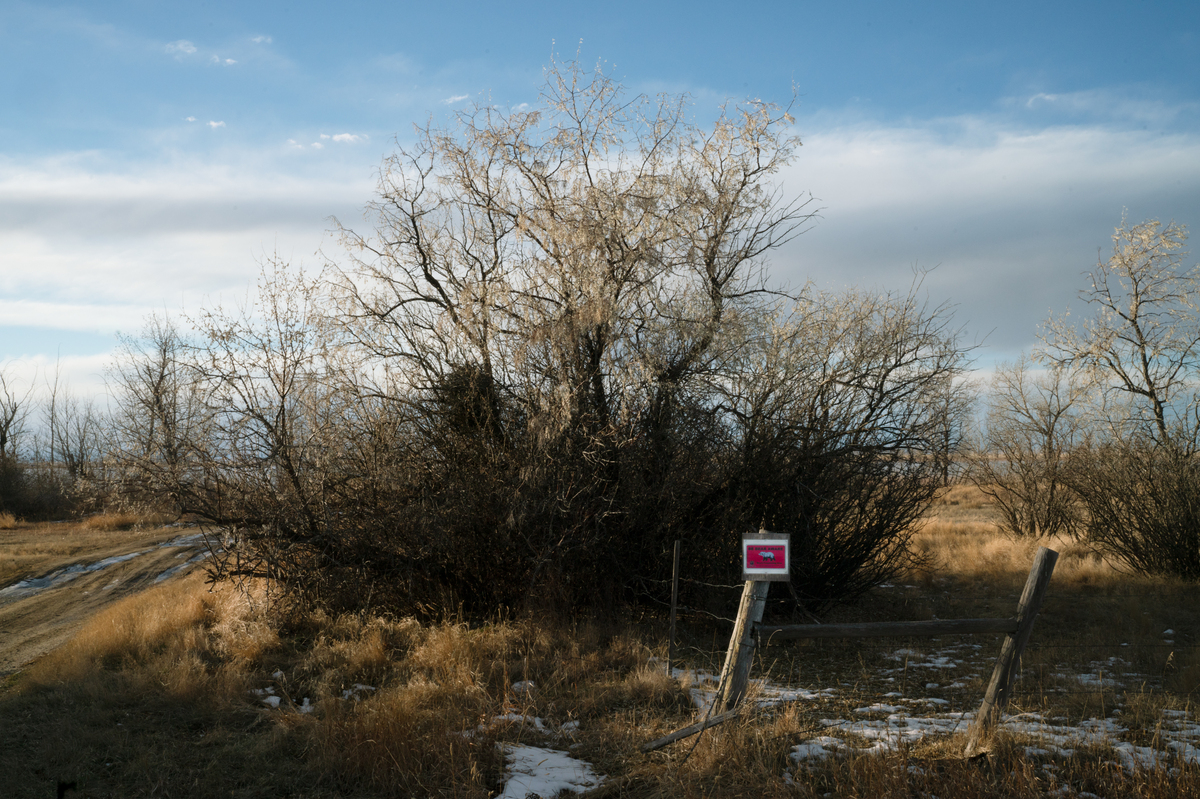
A acquit warning sign on the banks of Lake Frances in Valier, Mont. Sarmento captured and tagged and released a female person grizzly on Lake Frances last twelvemonth, afterward residents voiced concerns. The grizzly did non cause any conflicts.
Claire Harbage/NPR
Disagreement over what recovery means
The question of what constitutes recovery — how many bears there needs to be and where — is at the heart of the grizzly acquit delisting debate and it'southward a hard thing to answer, because it involves much more than just science.
The Endangered Species Act says a species is recovered when it is no longer in danger of extinction throughout all or a significant portion of its range, and when it'south unlikely to get and so "inside the foreseeable future."
That leaves a lot of room for interpretation.
And interpretations vary widely.

A grizzly at the Grizzly and Wolf Discovery Heart in Due west Yellowstone. Today, there are an estimated i,400 to 1,700 grizzly bears in the contiguous U.S. Claire Harbage/NPR hide caption
toggle caption
Claire Harbage/NPR

A grizzly at the Grizzly and Wolf Discovery Center in West Yellowstone. Today, there are an estimated 1,400 to 1,700 grizzly bears in the face-to-face U.S.
Claire Harbage/NPR
In 1993, a panel of federal, state, tribal and local biologists and stakeholders, chosen the Interagency Grizzly Behave Committee, put out a recovery plan for grizzly bears in the lower 48 states. It ready population targets for each of the v populations of grizzlies still living due south of Canada.
For Yellowstone-expanse bears, the goal was 500 bears. When they were listed equally threatened in 1975, there were as few as 136 bears left. Today, scientists estimate there are more than 700 bears in the ecosystem.

The Marias River in Northwest Mont. Grizzly bears used to alive from Alaska to central Mexico, ranging from the Pacific Coast to Missouri. Today, they only inhabit 2 percent of that historic range, living in isolated pockets. Claire Harbage/NPR hide explanation
toggle caption
Claire Harbage/NPR

The Marias River in Northwest Mont. Grizzly bears used to alive from Alaska to central Mexico, ranging from the Pacific Coast to Missouri. Today, they merely inhabit 2 percent of that historic range, living in isolated pockets.
Claire Harbage/NPR
Some wildlife groups and grizzly advocates question those numbers and the federal regime'due south population counting methodology. Others believe the initial recovery goals were set also depression.
"I think the people that are litigating this, for the conservation groups, it'southward virtually what recovery means and what your vision of that is going to be in the future," says Jeremy Bruskotter, a professor at the School of Environs & Natural Resources at Ohio State University. "Is it curating populations in isolated wilderness areas, or restoring them to wide areas of their celebrated range?"
Grizzly bears used to live from Alaska to central United mexican states, ranging from the Pacific Coast to Missouri. Today, they only inhabit 2 percentage of that celebrated range, living in isolated pockets.
The lack of connectivity between populations was a main reason the federal approximate restored endangered species protections for the bears late concluding year. Isolated populations don't have much genetic diversity and there are concerns that a hunt of the beast would prevent them from linking together.
Wildlife officials believe those connections will happen naturally, over time. Grizzly bears are venturing further afield, they point out, entering places they oasis't been for generations.
"The Greater Yellowstone Ecosystem has reached its carrying capacity for bears. Information technology's exporting bears," says Dan Ashe, manager of the U.S. Fish and Wild animals Service under President Barack Obama. "The question this point around, nearly whether they should be delisted, is more of a values-based question."
It'due south less a question nigh the Endangered Species Act, he says, and more than a question virtually the ethics of trophy hunting, or what a person views as an acceptable number of bears.
"That'southward a perfectly legitimate chat to take," Ashe says. "Merely having that discussion effectually the delisting process feeds this dialogue that the Endangered Species Human action is broken, and that once a species goes on the listing it is difficult to impossible to get information technology off. And, in the long run, that doesn't help the comport, or the prospect of conservation of threatened and endangered species."

The U.S. Fish and Wildlife Service believes the Yellowstone-surface area grizzly bears take been recovered for more than decade. Claire Harbage/NPR hide explanation
toggle caption
Claire Harbage/NPR

The U.S. Fish and Wild fauna Service believes the Yellowstone-expanse grizzly bears have been recovered for more than decade.
Claire Harbage/NPR
Legislative attacks, public support
The narrative that Ashe is referring to — that the Endangered Species Act is flawed because animals don't come up off it — is a pop i with Congressional Republicans and others opposed to the law.
In part, because at that place's some truth to the argument.
In the 45-year history of the Endangered Species Human action, fewer than 2 percent of species that have been listed have been recovered and removed.
"Equally a medico, if I acknowledge 100 patients to the infirmary and merely three recover enough under my handling to exist discharged, I would deserve to lose my medical license," said Sen. John Barrasso, R-Wyo., Chairman of the Senate Committee on Environment and Public Works, during a hearing on the Endangered Species Act last year.
The criticism ignores another relevant data, though.
Conservation takes a long time. Information technology took hundreds of years for grizzly bears to exist hunted, trapped and driven to the brink of extirpation from the lower 48 states. Scientists and conservationists say information technology's unreasonable to expect that they'd recover in a few decades.
It too ignores the fact that the Endangered Species Act has been incredibly successful at accomplishing its main goal: preventing extinction. Ninety-nine percentage of the animals that take been listed under the act nevertheless be today.
Still, in the last Congress, there were 116 attacks against the Endangered Species Human action, according to the Center for Biological Diversity. Bills and riders added to them were proposed to delist specific species, limit habitat protections, and to block funding for species like the New United mexican states meadow jumping mouse. None passed into law.

An estimated 900 lb grizzly was captured past the FWS last year subsequently being scared into a garage in a Hutterite community nigh Valier, Mont. Claire Harbage/NPR hide explanation
toggle caption
Claire Harbage/NPR
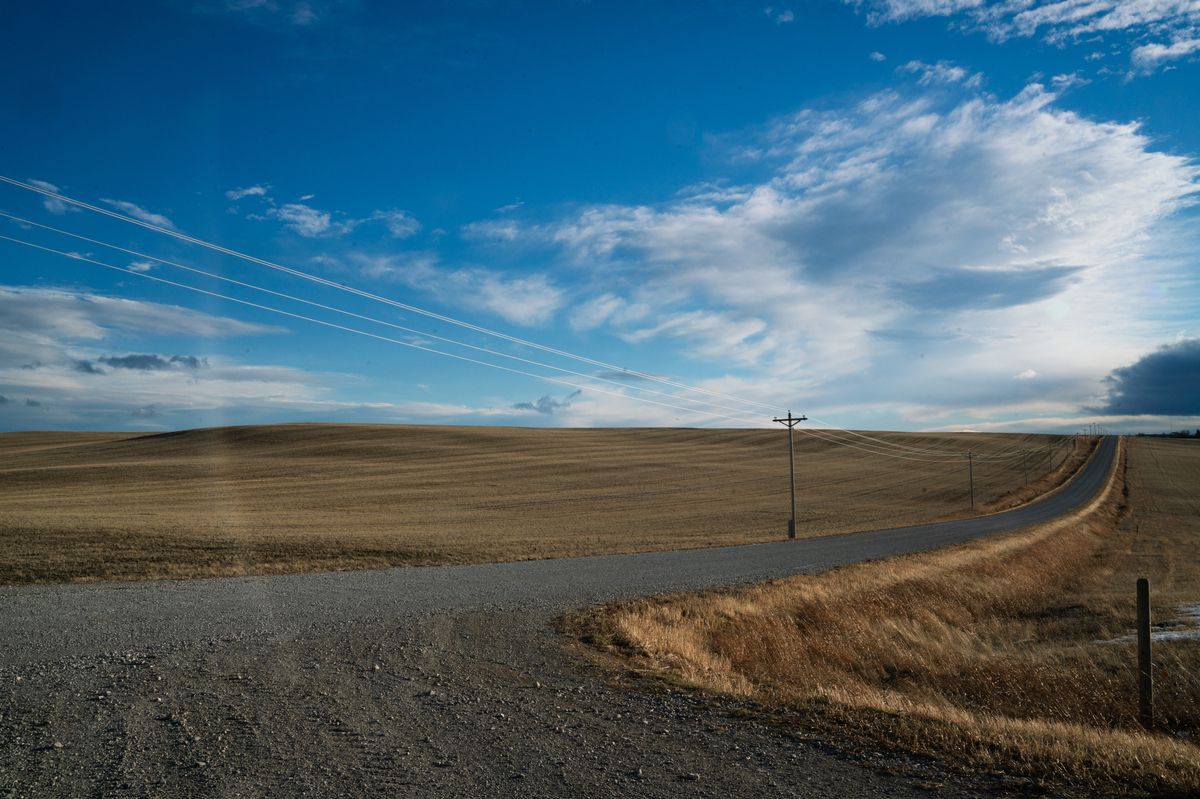
An estimated 900 lb grizzly was captured by the FWS last year later on being scared into a garage in a Hutterite community near Valier, Mont.
Claire Harbage/NPR
"All of these riders and all of these standalone bills keep declining and I call back that's because public support for the Endangered Species Act is really very, very loftier," says Bethany Cotton wool, wildlife program director for WildEarth Guardians, an environmental grouping that sued to go along grizzly bears listed.
A recent study constitute that the vast majority of Americans, regardless of region or political ideology, support the landmark environmental law. The legal back-and-forth on grizzly bear delisting seemed to have no discernible bear on, the study found.
"That concern [that not delisting species hurts the Endangered Species Act] has been sort of a threat that has been leveled for more than than a decade and we haven't seen it been proven truthful," Cotton wool says.
There is 1 notable exception though.
In 2011, post-obit a years' long, highly-contentious back-and-along on the delisting of grey wolves — similar to what's happening now with grizzlies — Congress took an unprecedented step.
A bipartisan measure, proposed by Sen. Jon Tester, D-Mont., and Rep. Mike Simpson, R-Idaho, was fastened to a budget rider that stripped endangered species protections from greyness wolves in their home states.
It was an boggling footstep that some worried would prepare a dangerous precedent.
Despite loud opposition, the mensurate passed.
It was the first and only fourth dimension Congress sidestepped the Endangered Species Act, delisting a species on its ain. Others have since tried to follow suit.
In the last Congress, lawmakers proposed to delist a species of jumping mouse, Mexican wolves, the American burying beetle, freshwater mussels and grizzly bears.
The grizzly bear proposal, by Rep. Liz Cheney, R-Wyo., would have directed the Interior Department to delist the bears in the Keen Yellowstone Ecosystem and prohibit time to come judicial review.
"We don't desire to accept Congress becoming the arbiters over the fate of species," Ashe says. "The longer this lingers, the more likely information technology is that people will effort to find a political solution."
"You're wasting your time"
Trina Jo Bradley stands up in the back of a crowded conference room and squints down at a set of scribbled notes.
"Hi, my name is Trina Bradley and I'g the vice president of the Marias River Livestock Association," she begins. "We have our share of bears."
Bradley collection more than 220 miles from her ranch to address the crowd. She'll speak for less than ii minutes.
The wild animals officials gathered at the forepart of the room know her. She speaks at most every grizzly acquit planning and committee meeting in the land, pressing lawmakers and federal and state biologists about their plans with the bears.
Years ago, her dad came to a meeting with her and never came back once more.
"You're wasting your fourth dimension," he told her. "They don't care."
The frustration built to the point that he and some of his neighbors don't even call acquit biologists anymore when they demand to, Bradley says. They don't meet the point.
They're then far past the terminate of their rope, she says, "they tin't even see it anymore."
Bradley isn't at that place even so. She still comes to these meetings and works with local biologists, representing her neighbors and others who've long since given up.
She looks back down at her script.
"There are two things that will win you points with ranchers like me," she reads. "Empathy and results."

Bradley closes the gate to ane of the pastures where her cows graze. She likes having grizzlies around, most days, and would like to run into the animals expand and exercise well, merely right now everything feels stuck. Claire Harbage/NPR hide caption
toggle caption
Claire Harbage/NPR
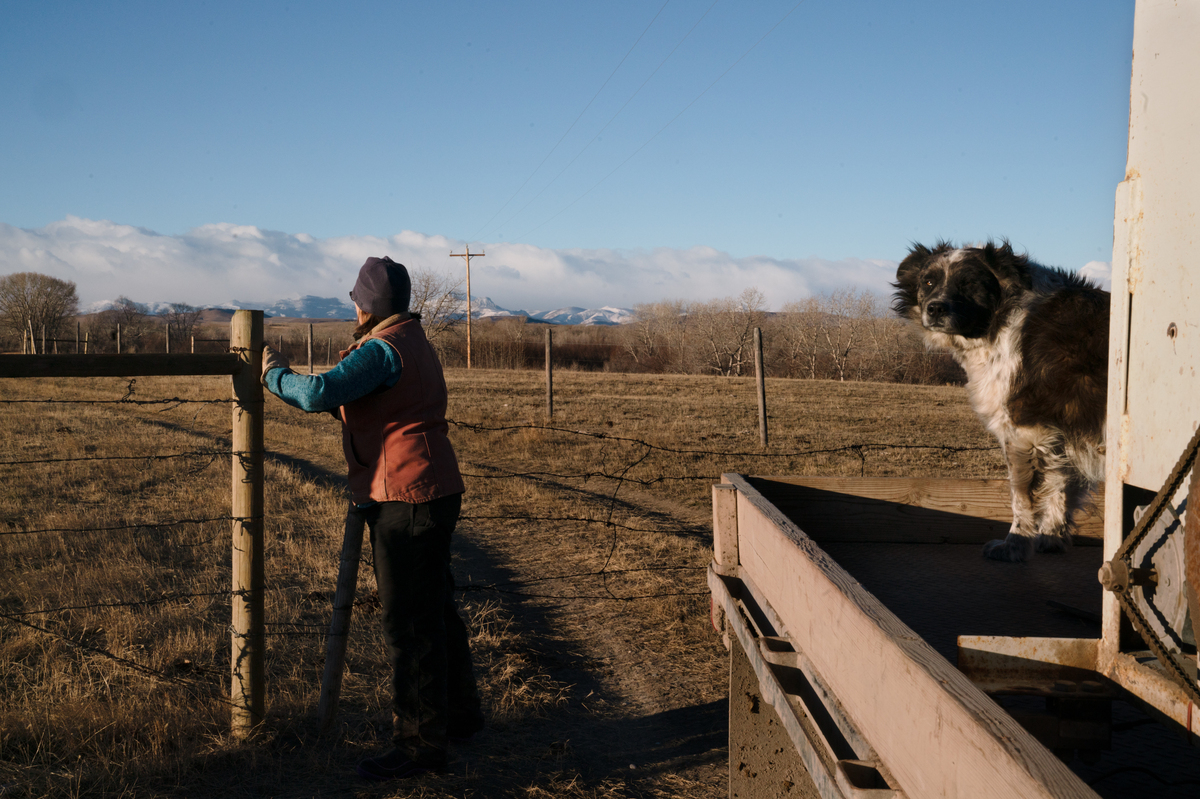
Bradley closes the gate to 1 of the pastures where her cows graze. She likes having grizzlies around, well-nigh days, and would like to see the animals expand and practice well, but correct now everything feels stuck.
Claire Harbage/NPR
Source: https://www.npr.org/2019/02/02/688553708/as-grizzlies-come-back-frustration-builds-over-continued-protections










0 Response to "Is Grizzly Goimg to Releade the Big Can Again"
Post a Comment